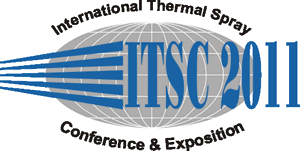
|
2952 |
|
Tuesday, September 27, 2011, Saal C2.2 11:00 AM Powders, Wires & Suspensions |
|
New cermet powders for HVOF spraying with improved corrosion and oxidation resistance for offshore, mining and power generation applications |
|
Stefan Zimmermann* / H.C. Starck GmbH, Germany Benno Gries / H.C. Starck GmbH, Germany Bernhard Brüning/ H.C. Starck GmbH, Germany |
|
For corrosion and oxidation protection even at elevated temperatures, numerous special materials such as Inconel® or Hastelloy® type alloys are available as wires or powders for thermal spraying. However, in many applications corrosion is accompanied by wear and metallic coatings very often do not provide a sufficient lifetime due to their low hardness and wear resistance. In contrast to these corrosion resistant metallic materials, wear resistant carbide based powders up to now contain only simple binders, such as Co, Ni, Co-Cr and Ni-Cr, providing limited corrosion or oxidation resistance only. In order to significantly improve the corrosion and oxidation performance of HVOF sprayed cermet coatings, agglomerated and sintered WC and Cr3C2 based powders with complex, corrosion and oxidation resistant Ni base alloys as binders have been developed recently. In the present study, various WC and Cr3C2 based cermet powders with complex Ni and Fe based alloys were HVOF sprayed. Microstructure and phase composition of the coatings were analysed by microscopy and X-ray diffraction. In order to study the decarburization and oxidation of the materials in the spray process, the carbon and oxygen content of the coatings were determined. The technical properties of the coatings were examined by hardness measurements, abrasive wear and cavitation tests. The corrosion behaviour of the coatings was characterised by polarization measurements, salt spray and immersion tests. The results show that the use of carbide powders with highly alloyed binder materials can considerably improve the corrosion behaviour of cermet coatings. In addition, both wear and cavitation resistance reach the level of state-of-the-art carbide coatings. However, corrosion behaviour can significantly be affected by the spray parameters and by the grain size distribution of the powders applied. |